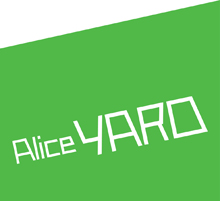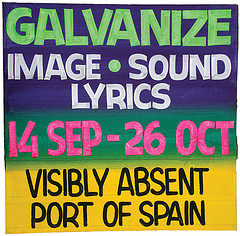Sunday, January 12, 2003
The painter Hubert Moshett, an influential figure in the history of twentieth-century Guyanese art (though little-known in the rest of the Caribbean), died this week, at the age of 101. The Stabroek News today runs an obituary by Alim Hosein (no link, because Stabroek has no permanent online archive):
Moshett ... [was] Guyana’s last living link to the art of the past ... one of the artists whose work helped to create a transition from that art to the one which exists today. Moshett was born in September 1901, and enjoyed an art career which lasted until the mid 1980s. In this period, his work formed part of the transition from the heavily European-influenced art of nineteenth and early twentieth-century Guyana to the developments of a local style in the 1950s....
Not much of the art produced in Guyana from the early period (pre-1930) has survived. However, some indication of the kind of work produced is given by an anonymous piece which was acquired by Castellani House in 2000. Dubbed Sea Wall Promenade, the painting was probably done in the 1920s, and most likely by a tourist or an expatriate. It shows all the virtues of traditional European landscape painting — the piles of creamy massed clouds, unnamed colour, glazed application of paint, dramatic balance of light and shade, scene straight out of English or Dutch painting.
The work of Moshett and others was influenced by this kind of art, but also by other contemporary European styles and approaches. In their work could be seen both the traditional influences and the movement away from them, and also something else which comes from knowledge of and inhabitation in the landscape which they painted.
But they all — Moshett, Phang, Antrobus and others — were basically the inheritors of European realist art. Their subjects were the same: the landscape, things of nature, the human figure.
Moshett’s portrait of E.R. Burrowes at his easel is a very revealing spy-hole into the Guyanese artist of that time. Burrowes is recognised as one of the foremost pioneers of local art, but his portrait depicts him as a gentleman painter in the best manner, complete with his tie, white coat and pipe, confronting his canvas in a classical stance. Moshett’s technique shows that he had mastered texture and light and composition. But the work has neither the look nor feel of something transplanted from Europe or any other culture. The light is clear tropical light, the brushwork is open, the colours are stronger and more direct. The lessons of Europe had been accepted, successfully assimilated and subtly transformed. It would be the next generation of artists who would take up from here and produce a more radical art....
Moshett was an integral part of the local ferment in art. He was a member of the British Guiana Arts and Crafts Society formed in 1931, was secretary to the Guianese Art Group founded in 1944, and was also secretary of the Guyana Art Association of 1966. He also ran art classes. Even after his retirement as an active artist, he remained a noted figure among artists. Notably, however, he never produced a one-man show, although he exhibited with other artists. This might be because he never kept hold of much of his work — most of the estimated 170 pieces which he produced were sold, often for modest prices....
Moshett’s work shows a focus on the actualities of place, a delight in the exploration of light, colour, form and painting technique.... Moshett and his generation of artists gave Guyanese a sense of the validity and beauty of our world, at a time when many Guyanese might not have fully realised that theirs was a genuine and unique life worthy of art.
Ian McDonald also pays tribute in a short note at the end of his column in today's Stabroek News:
Hubert Moshett died this week. He was 101 years old. He was one of the pioneers of Guyanese art. Nobody I can think of lived a better life. He was the sweetest-natured person I ever knew.
He refused to be dismayed. He never thought the world had or ever would do him any wrong.
He made a strong impression for such a gentle man. He conveyed a sense of being blessed. He did great work modestly and helped others in their work. And I think he knew the deep meaning of love, since when he died at his home his wife aged 96 was by his side.
At his home just before the funeral service a good neighbour who had helped care for the old couple said something which moved me. She searched for the right words and found them and said them to me with great emphasis: "Mr. Moshett was a very thankful man."
Moshett ... [was] Guyana’s last living link to the art of the past ... one of the artists whose work helped to create a transition from that art to the one which exists today. Moshett was born in September 1901, and enjoyed an art career which lasted until the mid 1980s. In this period, his work formed part of the transition from the heavily European-influenced art of nineteenth and early twentieth-century Guyana to the developments of a local style in the 1950s....
Not much of the art produced in Guyana from the early period (pre-1930) has survived. However, some indication of the kind of work produced is given by an anonymous piece which was acquired by Castellani House in 2000. Dubbed Sea Wall Promenade, the painting was probably done in the 1920s, and most likely by a tourist or an expatriate. It shows all the virtues of traditional European landscape painting — the piles of creamy massed clouds, unnamed colour, glazed application of paint, dramatic balance of light and shade, scene straight out of English or Dutch painting.
The work of Moshett and others was influenced by this kind of art, but also by other contemporary European styles and approaches. In their work could be seen both the traditional influences and the movement away from them, and also something else which comes from knowledge of and inhabitation in the landscape which they painted.
But they all — Moshett, Phang, Antrobus and others — were basically the inheritors of European realist art. Their subjects were the same: the landscape, things of nature, the human figure.
Moshett’s portrait of E.R. Burrowes at his easel is a very revealing spy-hole into the Guyanese artist of that time. Burrowes is recognised as one of the foremost pioneers of local art, but his portrait depicts him as a gentleman painter in the best manner, complete with his tie, white coat and pipe, confronting his canvas in a classical stance. Moshett’s technique shows that he had mastered texture and light and composition. But the work has neither the look nor feel of something transplanted from Europe or any other culture. The light is clear tropical light, the brushwork is open, the colours are stronger and more direct. The lessons of Europe had been accepted, successfully assimilated and subtly transformed. It would be the next generation of artists who would take up from here and produce a more radical art....
Moshett was an integral part of the local ferment in art. He was a member of the British Guiana Arts and Crafts Society formed in 1931, was secretary to the Guianese Art Group founded in 1944, and was also secretary of the Guyana Art Association of 1966. He also ran art classes. Even after his retirement as an active artist, he remained a noted figure among artists. Notably, however, he never produced a one-man show, although he exhibited with other artists. This might be because he never kept hold of much of his work — most of the estimated 170 pieces which he produced were sold, often for modest prices....
Moshett’s work shows a focus on the actualities of place, a delight in the exploration of light, colour, form and painting technique.... Moshett and his generation of artists gave Guyanese a sense of the validity and beauty of our world, at a time when many Guyanese might not have fully realised that theirs was a genuine and unique life worthy of art.
Ian McDonald also pays tribute in a short note at the end of his column in today's Stabroek News:
Hubert Moshett died this week. He was 101 years old. He was one of the pioneers of Guyanese art. Nobody I can think of lived a better life. He was the sweetest-natured person I ever knew.
He refused to be dismayed. He never thought the world had or ever would do him any wrong.
He made a strong impression for such a gentle man. He conveyed a sense of being blessed. He did great work modestly and helped others in their work. And I think he knew the deep meaning of love, since when he died at his home his wife aged 96 was by his side.
At his home just before the funeral service a good neighbour who had helped care for the old couple said something which moved me. She searched for the right words and found them and said them to me with great emphasis: "Mr. Moshett was a very thankful man."
Subscribe to:
Post Comments (Atom)









No comments:
Post a Comment